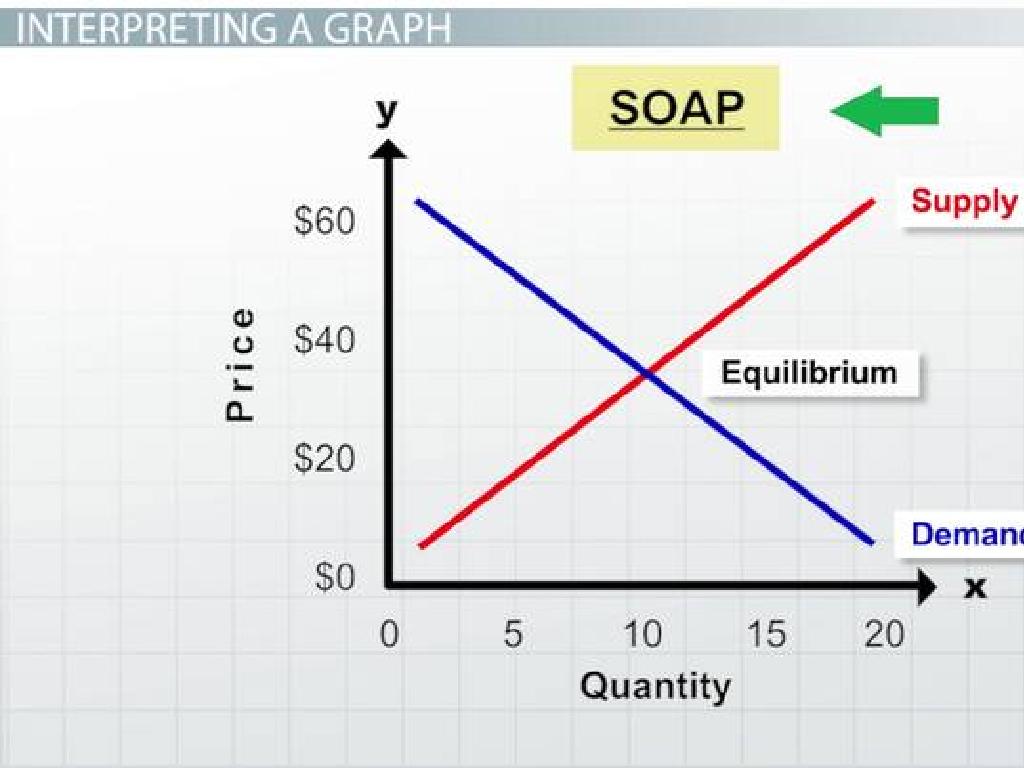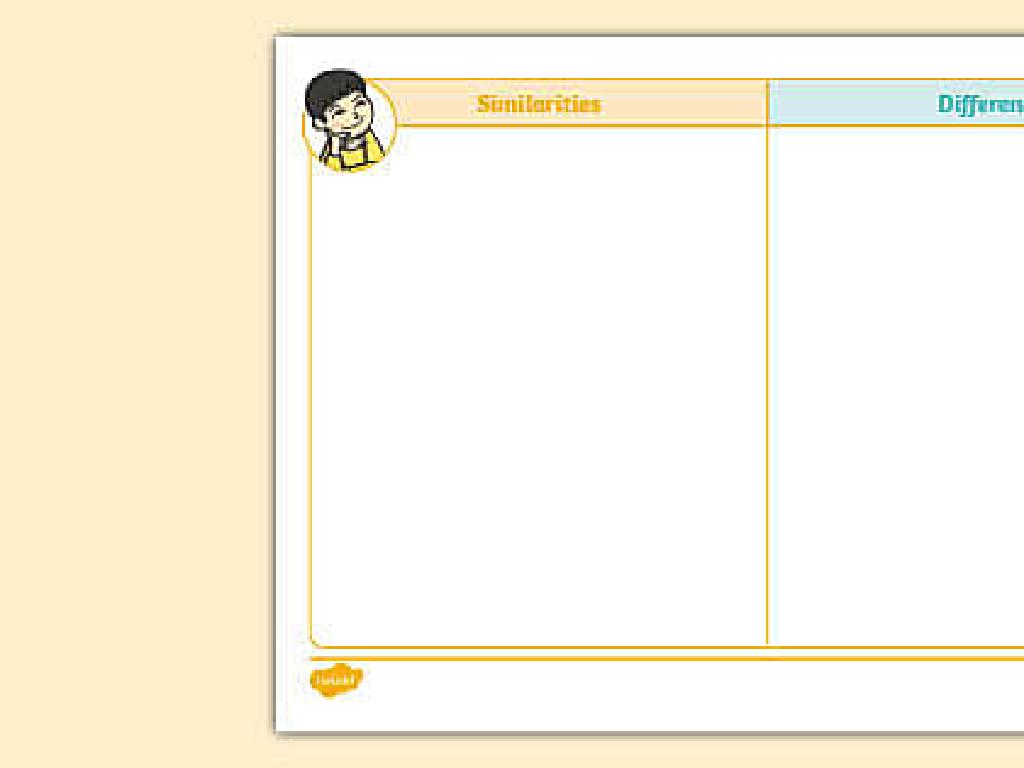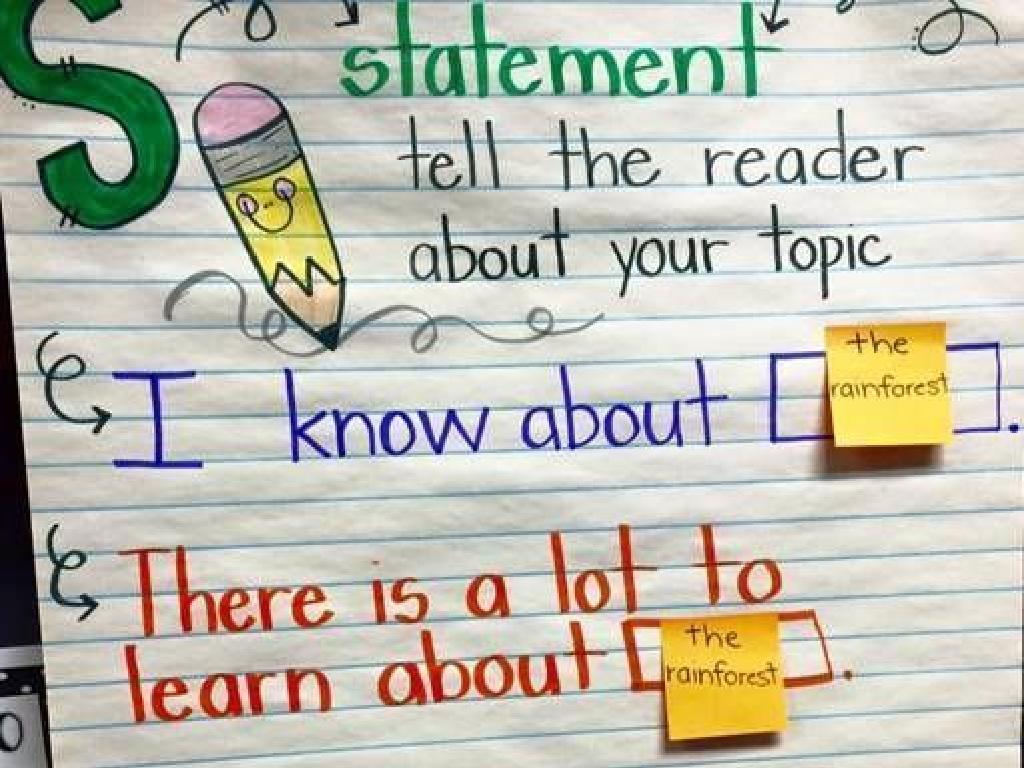Compare Numbers Up To One Billion
Subject: Math
Grade: Fourth grade
Topic: Ordering And Comparing
Please LOG IN to download the presentation. Access is available to registered users only.
View More Content
Welcome to Ordering and Comparing!
– Learn to compare numbers up to 1 billion
– Understand how to determine which of two numbers is greater or less
– Grasp the concept of large numbers
– Big numbers are used in population, money, and more
– Real-life applications of number comparison
– Comparing prices, distances, or quantities in daily life
– Master the skill of ordering numbers
– Practice arranging numbers from smallest to largest and vice versa
|
Today’s lesson will introduce students to the concept of comparing and ordering large numbers, specifically up to one billion. Understanding large numbers is crucial as it is a skill used in various aspects of daily life, such as understanding distances, populations, and financial literacy. By the end of the lesson, students will be able to confidently determine the relative size of numbers and arrange them in order. Engage the class with real-world examples where large number comparisons are necessary, such as comparing the populations of different cities or the heights of buildings. Provide plenty of practice examples and use visual aids like number lines if possible to help students visualize the magnitude of the numbers they are comparing.
Comparing Numbers Up to One Billion
– Understanding number comparison
– Comparing numbers means finding which is bigger or smaller.
– Symbols: >, ‘ means more than, ‘<' means less than, '=' means the same as.
– Examples of comparing numbers
– Compare 123,456,789 to 987,654,321 using symbols.
– Practice comparing large numbers
– Use place value to compare numbers like 56,789,123 and 76,543,210.
|
This slide introduces the concept of comparing numbers, which is a fundamental skill in mathematics. Students will learn to use comparison symbols to determine the relationship between two numbers. Start by explaining each symbol and what it represents. Then, provide clear examples using large numbers to illustrate the concept. Encourage students to think about place value and the significance of each digit in a number. As an activity, have students practice by writing down pairs of large numbers and using the correct symbols to compare them. This will help solidify their understanding of number comparison and prepare them for working with numbers up to one billion.
Place Value Review: Comparing Large Numbers
– Understanding place value is key
– Each digit has a position-based value
– For example, in 507, the 5 is in the ‘hundreds’ place
– Review place values up to a billion
– We’ll look at ones, tens, hundreds, all the way to billions
– Practice comparing using place value
– How is 400,000,000 different from 40,000,000?
|
This slide is aimed at reinforcing the concept of place value, which is crucial when comparing large numbers. Start by reminding students that every digit in a number has a specific value depending on where it is located. Use examples to illustrate how the value of a digit changes with its position. Review the place values from ones to billions, ensuring students are comfortable with each step. Engage the class with examples, asking them to compare numbers and explain their reasoning. This foundational understanding will help them tackle larger numbers confidently.
Comparing Numbers Up to One Billion
– Start with the highest place value
– Look at the billions, then millions, and so on
– Same digits? Move right one place
– If billions are equal, compare millions place next
– Practice with class examples
– We’ll use examples on the board to learn this
– Understand place value importance
|
This slide introduces the concept of comparing large numbers by examining place values from the highest (billions) to the lowest. It’s crucial for students to understand that they should start comparing from the leftmost digit and move to the right only if the digits are the same. Provide clear examples on the board, starting with numbers that differ in the billions place, then millions, and so on, to illustrate the process. Encourage students to explain their thought process as they compare each set of numbers. This will help solidify their understanding of place value and its role in comparing numbers. Prepare to guide them through several examples, increasing in difficulty, to ensure comprehension.
Let’s Practice Comparing Large Numbers!
– Comparing two large numbers
– Check each place value
– Start from the leftmost digit and compare each corresponding place
– Use comparison symbols
– Symbols: > (greater), < (less), = (equal)
– Example: 123,456,789 vs 987,654,321
– Which number is greater? Let's find out together!
|
This slide is designed to help students practice the skill of comparing large numbers up to one billion. Begin by reminding them to compare numbers starting from the leftmost digit, which has the highest value. Emphasize the importance of place value in determining the magnitude of a number. Reinforce the use of comparison symbols and ensure students understand what each symbol represents. The example provided will serve as a class activity where students can apply these concepts. Walk through the example step by step, comparing each place value, and guide students to the correct use of comparison symbols to determine which number is greater.
Using Comparisons in Real Life
– Comparing helps in decision-making
– Compare prices for smart shopping
– Which item offers more value for the price?
– Use comparisons for travel distances
– Which city is closer or farther for travel?
– Make better choices with number comparison
|
This slide aims to show students how the skill of comparing numbers is used in everyday life. Emphasize the importance of this skill in practical situations such as managing money and planning trips. For instance, when shopping, comparing prices helps in choosing the best deal, and when traveling, comparing distances between cities aids in planning the route. Encourage students to think of other scenarios where they can apply number comparison to make informed decisions. Provide examples and possibly a class activity where students can practice comparing large numbers in real-life contexts.
Class Activity: Number Comparison Challenge
– Pair up for a comparison game
– Receive sets of large numbers
– Use symbols >, <, or = to compare
– Think: Is my number larger, smaller, or equal?
– Aim to be the Comparison Champions!
|
This activity is designed to reinforce the concept of comparing large numbers up to one billion. Students will work in pairs to foster teamwork and peer learning. Each pair will receive a set of number cards. They will take turns drawing two cards at a time and deciding which comparison symbol to place between them. The teacher should circulate to ensure understanding and correct use of comparison symbols. Possible variations of the activity could include: using number cards to create the largest or smallest possible number, ordering a set of numbers from smallest to largest, or having a ‘lightning round’ where pairs compete to compare numbers correctly in the shortest amount of time.
Conclusion: Mastering Large Number Comparisons
– Congratulations on learning comparison!
– Recall the steps to compare numbers
– Start from the highest place value and move right
– Understand the role of place value
– Place value determines the value of a digit in a number
– Practice makes perfect
– The more you practice, the better you’ll get at comparing
|
As we wrap up today’s lesson on comparing numbers up to one billion, it’s important to recognize the students’ hard work. Reinforce the concept that understanding place value is crucial when comparing numbers, as it helps to identify the magnitude of each digit in a number. Remind them of the steps we’ve learned: looking at the highest place value first and moving to the right, comparing digits at each place. Encourage continuous practice at home with fun activities like ordering items by price or comparing distances between cities. With consistent practice, students will become more confident and proficient in comparing large numbers.




/human_history_cities_empires.jpg)

